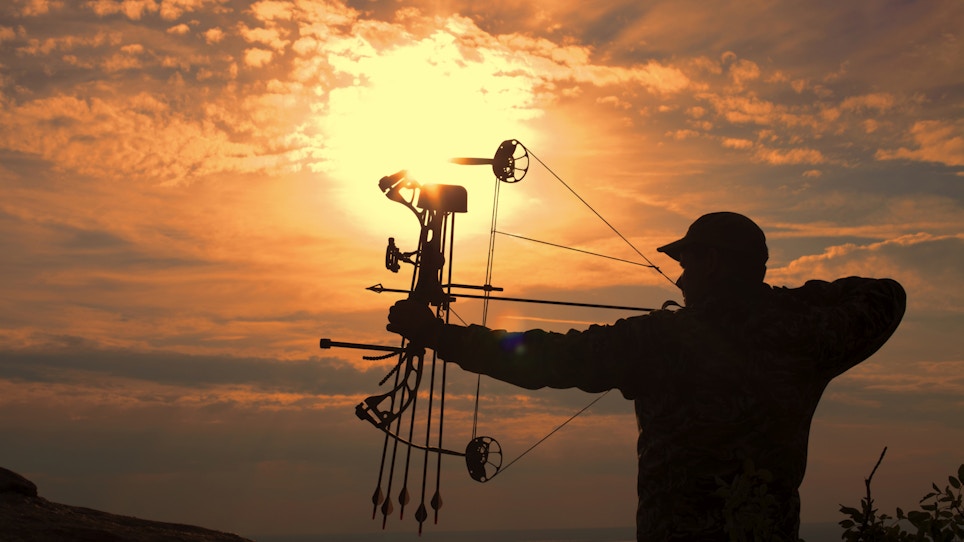We’ve all experienced it at one time or another. You have a friend who killed the buck of a lifetime, and you’ve heard the impressive story of how it all played out. You’re as excited as he is about the whole experience and can’t wait to see the buck you both have dubbed “Double-Drop” dead on the ground. With eager anticipation you grab your smartphone to check your inbox, and your excitement quickly fades when the photo attachment opens.
If there’s one area most hunters can improve upon, it’s taking quality trophy photos, and with today’s affordable digital equipment, it’s really pretty easy if you’re willing to take the time to learn.
There are many great photographers you can learn from, but for top-notch hunting imagery it’s hard to beat what Russell Graves produces day in and day out. A Texas native, Graves has been capturing the wild places we love, the animals we cherish and the hunters who pursue them for nearly three decades. His images have appeared in virtually every major hunting magazine and website. Always willing to teach, this professional photographer was eager to share some insights on what hunters can do to digitally document their hunt with clarity and uniqueness.
It’s Graves’ opinion that the first mistake hunters make when taking their trophy photo is rushing through the process. “Regardless if you hunt with a bow or rifle, chances are you’ve worked extremely hard for that trophy,” he explained. “Not only do you owe it to yourself to spend some extra time taking good photos, you also owe it to the animal.”
It’s always exciting when you first walk up on your trophy, and sometimes in that excitement we forget about this step in the experience. Granted, it can be time-consuming getting the right shot, and even daunting when you’re by yourself, but you’ll appreciate the experience more when you have the photos to look back on.
“That said, taking good photos is more than just ensuring the camera is focused,” Graves said. “Be mindful of where you’re shooting, and strongly consider utilizing a more neutral background to get the best results with your trophy. Deep blue skies add ‘pop’ to a photo, so finding a location like a tank dam or rise in elevation is a great location to grab some sky. An open field in the background can also be good. Furthermore, stay away from wooded or brushy backgrounds as they tend to take away from what you are wanting the viewers to focus on. Think contrast when picking the right spot, with the idea of directing the attention to the subject, not what’s around the subject. Camera position is also important to ensure the viewer of the photo has a proper perspective of your trophy. Make sure the camera is at least level with the animal’s head or slightly lower.
“Composing the shot is also critical, and don’t be afraid to take photos from several different angles. Obviously removing unsightly blood and the exposed tongue is important in this process, but just as important is how the animal is set up. When possible, tuck the legs under the animal to give it a more natural and respectful pose. Also make sure the animal’s eyes are open, and if that’s not possible consider using glass or acrylic eyes like those a taxidermist uses to achieve a natural look. This will often give the trophy a more alive look and will add to the overall photo.
“The biggest issue for many hunters is having even lighting. If it’s cloudy, great, you can take photos all day, but generally speaking the sun is overhead after a morning hunt, which casts shadows on your subject, or the light is fading in the evening. When possible, try to take photos either early or late in the day to achieve more even lighting, and don’t be afraid to use a fill flash. If it’s dark, use the headlights of a vehicle to cast good light on your subject in conjunction with the flash, and consider moving the vehicle to different angles and depths to achieve the look you want. Lastly, although most of the time you want the available light pointing at your subject’s face, take some photos with your subject backlit as well. Backlighting is often overlooked, but when used with a flash a backlit subject can look exceptionally well.”
All good photographers have a level of uniqueness to their work that generally sets their images apart from the average-Joe hero shot. Although uniqueness has a lot to do with having a natural photographic eye, a level of it can also be learned. According to Graves, one of the best ways to develop a deeper photographic eye is to see what others are doing and pick the type of shots you like. He suggests flipping through magazines and visiting websites to see the style of images you prefer. Better yet, create an image file on your smartphone that you can use to help develop your creativity when taking photos in the field.
“Lastly, remember that you’re telling a story, not just taking a photo of your trophy. There’s more to a bowhunt than just the trophy at the end, and with today’s digital equipment you don’t have to be shy with the shutter. Take photos of the whole experience and be mindful that a good story has both a beginning and ending, as well as elements of conflict in the middle. Maybe it’s man versus wild, man versus man or man versus the elements; regardless, there’s always a photographic story to tell if you’re willing to take the time and effort to develop it. In the end, you will find just as much satisfaction in documenting your hunt digitally as you did releasing the arrow.”






